ACELA1447
Understand that the purposes texts serve shape their structure in predictable ways
Elaborations
- discussing and comparing the purposes of familiar texts drawn from local contexts and interests (Skills: Literacy, Critical and Creative Thinking)
- becoming familiar with the typical stages of types of text including recount and procedure (Skills: Literacy, Critical and Creative Thinking)
- using different types of texts, for example procedures (including recipes) and discussing the text structure (Skills: Literacy, Critical and Creative Thinking)
- Plus Plan
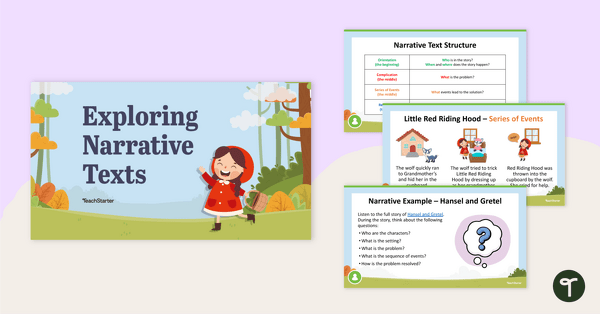
Exploring Narrative Texts PowerPoint
Teach your students about the key elements of narrative texts with this comprehensive teaching presentation.
- Plus Plan
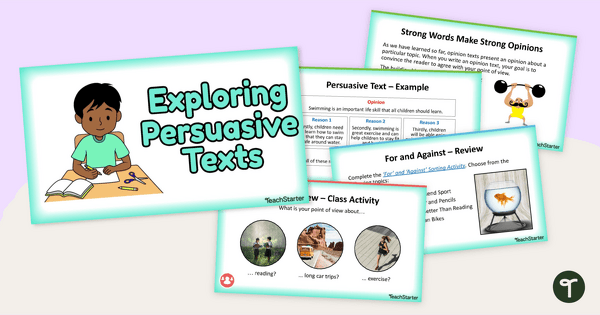
Exploring Persuasive Texts PowerPoint - Year 1 and Year 2
A 35 slide editable PowerPoint template to use when teaching your students about the structure and language features of persuasive texts.
- Plus Plan
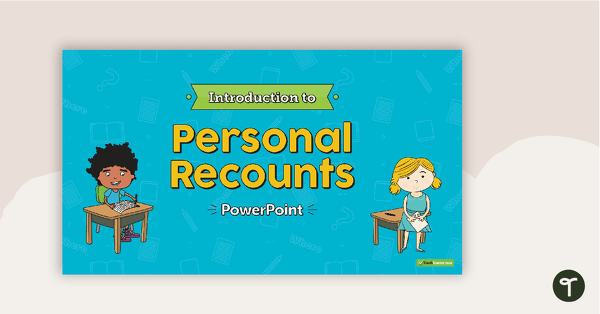
Introduction to Personal Recounts PowerPoint
Use this personal recount set of teaching slides to teach younger students about the structure and language features of personal recounts.
- Plus Plan
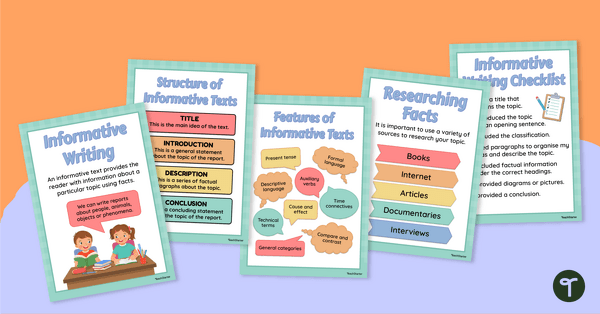
Informative Writing Posters
Display this set of 5 information report posters in your classroom during your informative writing unit.
- Plus Plan
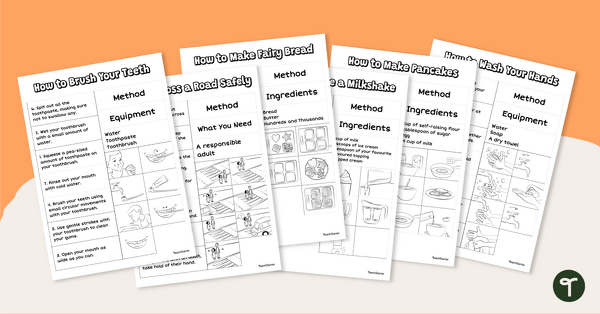
Build a Procedure Text – Cut and Paste Worksheets
Use these different examples of procedure writing to teach your students about the structural features of procedure texts.
- Plus Plan
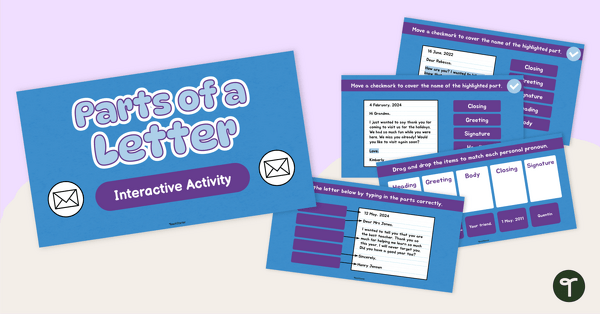
The Parts of a Letter Interactive Activity
Teach the parts of a letter with this engaging interactive activity where students learn the format of a letter through sorting and labelling exercises.
- Plus Plan
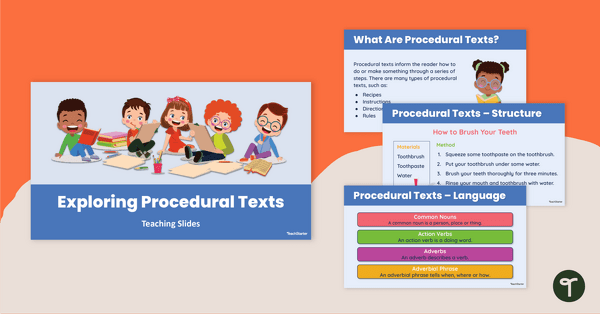
Exploring Procedural Writing Teaching Slides
Teach your students how to write a procedure using this detailed slideshow targeted at lower primary school students.
- Plus Plan
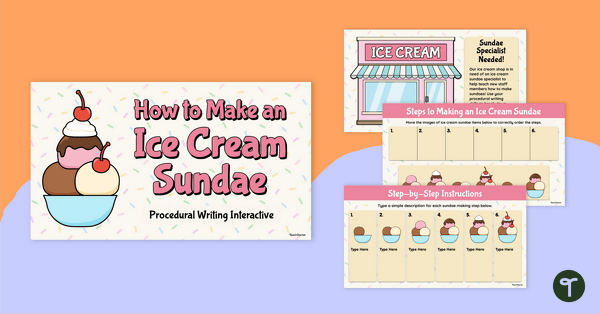
How to Make an Ice Cream Sundae Interactive Activity
Use this “How to Make an Ice Cream Sundae” procedural writing interactive activity to model the purpose, structural elements and language features of procedure texts.
- Plus Plan
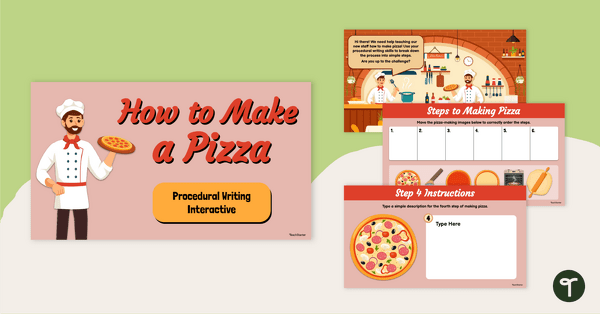
How to Make a Pizza Interactive Activity
Use this “How to Make a Pizza” procedural writing interactive activity to model the purpose, structural elements and language features of procedure texts.
- Plus Plan
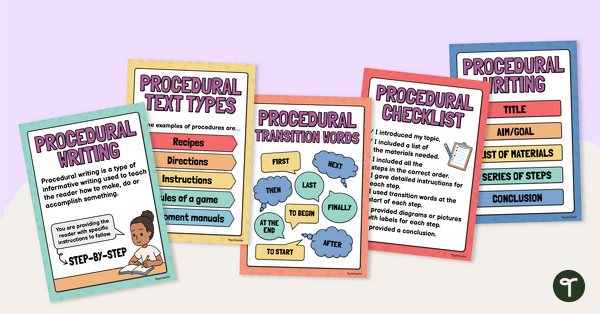
Procedural Writing Posters
Display this set of 5 procedural writing posters in your classroom during your procedural writing unit.
- Plus Plan

How to Decorate a Christmas Tree - Year 1 Procedural Writing Activity
Practise sequencing and writing procedural texts with an interactive ‘How to Decorate a Christmas Tree’ slide deck and differentiated writing prompts for Year 1 students.
- Plus Plan
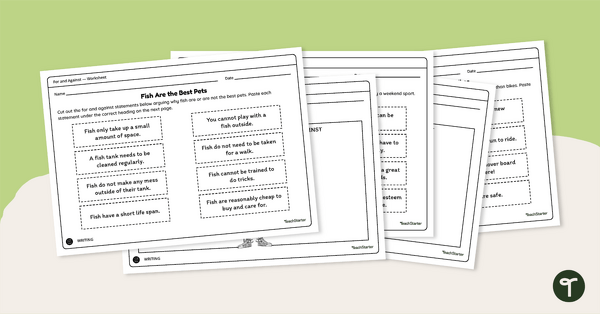
For and Against Worksheets
Explore 'for' and 'against' arguments for five different topics with this set of 'for' and 'against' sorting activities.
- Plus Plan
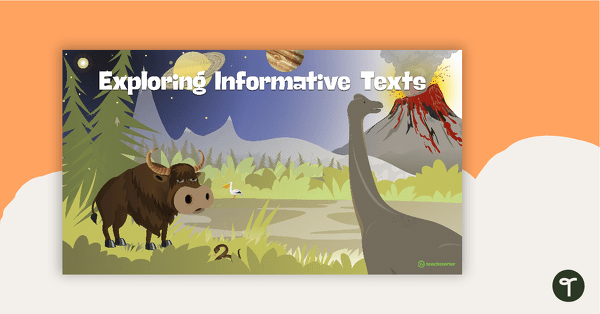
Exploring Information Reports Teaching Slides
Teach your students how to write an information report using this detailed slideshow targeted at lower primary school students.
- Plus Plan
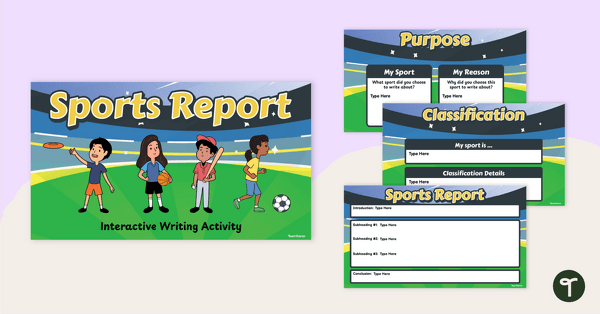
Sports – Digital Report Writing Activity
Use this digital writing scaffold to model the purpose and structural elements of informational writing.
- Plus Plan
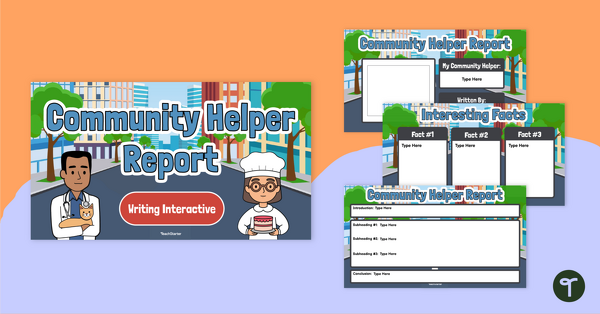
Community Helper – Digital Report Writing Activity
Use this community helpers interactive activity to model the purpose and structural elements of information reports.
- Plus Plan

Interactive Build A Snowman Sequencing Activity
Practise sequencing and writing procedural texts with an interactive How to Build a Snowman game.
- Plus Plan
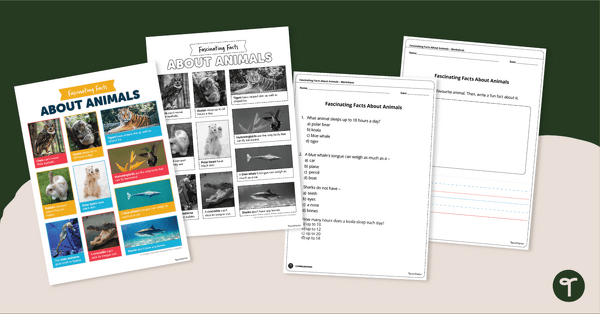
Fascinating Facts About Animals Worksheet
Build reading comprehension skills and learn about amazing animals with a printable year 1 reading comprehension worksheet pack.
- Plus Plan
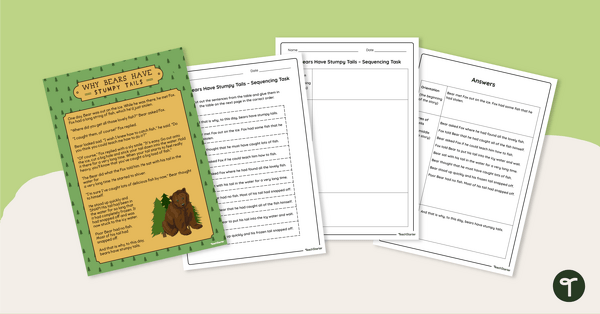
Why Bears Have Stumpy Tails – Sequencing Worksheet
Identify the story beginning, series of events and ending with this narrative text sequencing activity.
- Plus Plan

Friendly Letter Example Pack
Download this friendly letter example set featuring five model letters with labelled and unlabelled versions, perfect for teaching students the structure of a friendly letter.
- Plus Plan
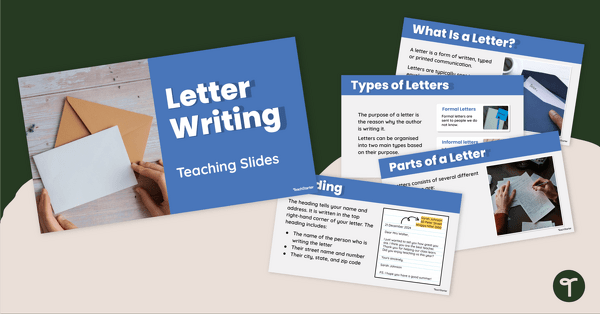
Letter Writing PowerPoint
Download this letter writing PowerPoint to teach students about the purpose, audience and structure of letters through an engaging and easy-to-follow presentation.
- Plus Plan
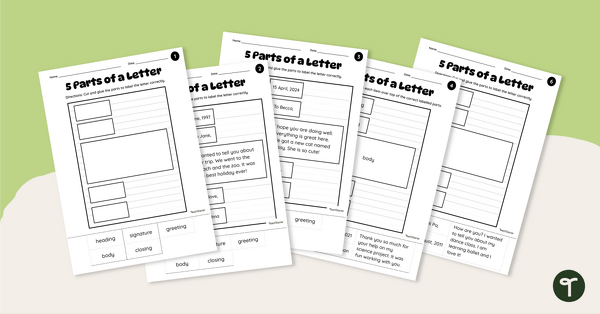
5 Parts of a Letter Cut and Paste Worksheets
Teach the 5 parts of a letter with this set of hands-on cut-and-paste worksheets that make learning letter writing interactive and fun.
- Plus Plan
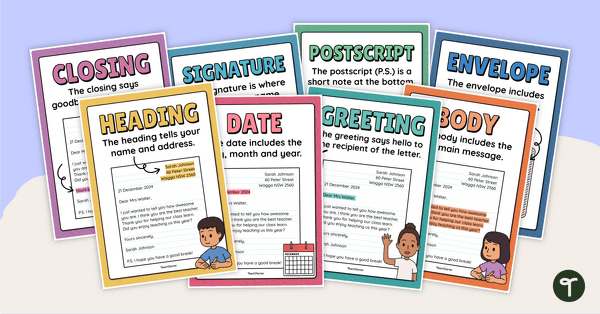
Parts of a Letter Poster Pack
Use this parts of a letter poster pack, featuring colourful visuals and clear explanations, to help students understand the key components of a letter.
- Plus Plan
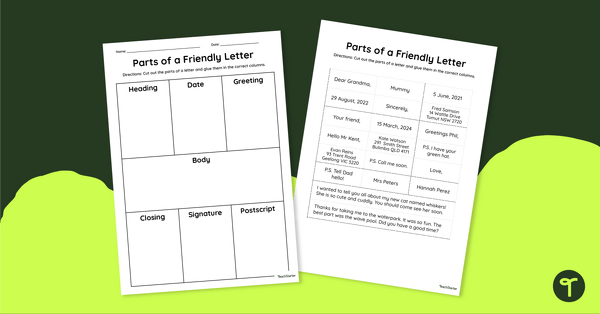
Parts of a Friendly Letter Sorting Worksheet
Teach the parts of a friendly letter with this sorting worksheet that helps students identify key letter components.
- Plus Plan

Parts of a Letter Worksheet
Download this parts of a letter worksheet to help students identify key letter-writing components and essential vocabulary.
- Plus Plan
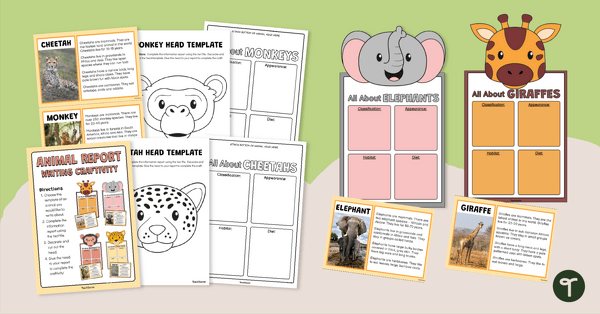
Animal Information Report – Writing Craftivity
Use this animal-themed writing and craft activity to teach your early years students about informative writing.
- Plus Plan
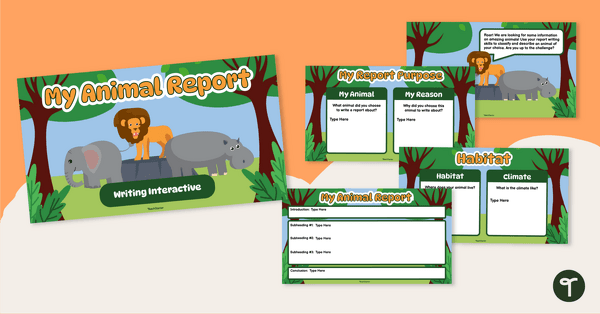
My Animal – Digital Report Writing Activity
Get your students to write an information report on an animal using this digital writing scaffold perfect for modelled and shared writing.
- Plus Plan
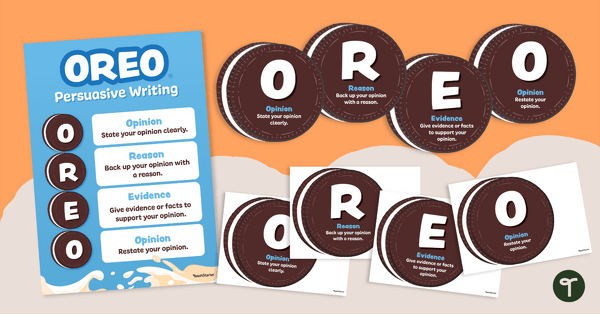
OREO® Persuasive Writing Posters
Help students remember the structure of persuasive texts with this fun OREO® acronym.
- Plus Plan
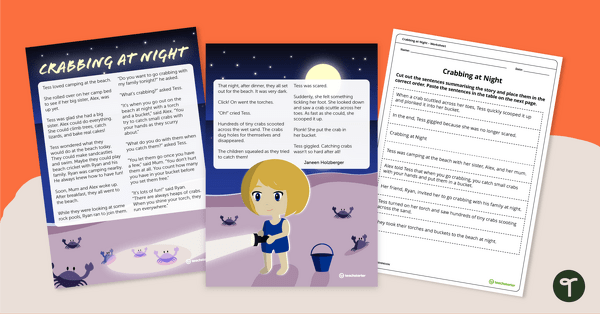
Crabbing at Night - Sequencing Worksheet
Identify the story beginning, series of events and ending with this narrative text sequencing activity.
- Plus Plan
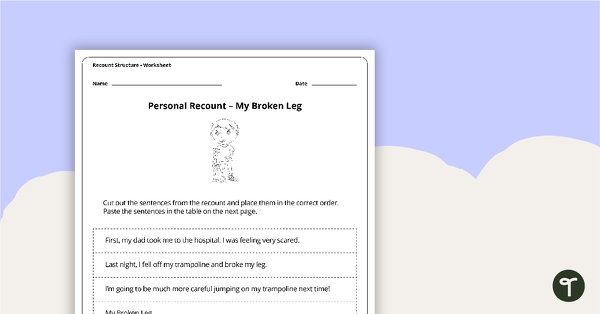
Personal Recount Sequencing Activity - My Broken Leg
A worksheet to use in the classroom when learning the sequence of a personal recount.
- Plus Plan
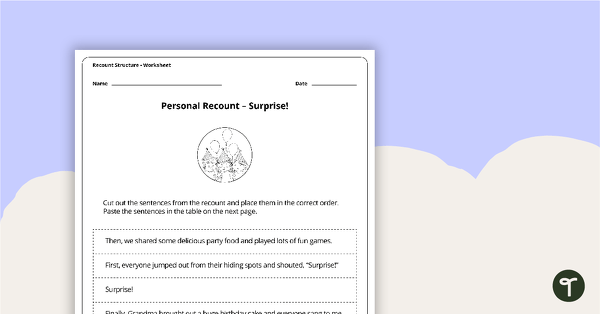
Personal Recount Sequencing Activity - Surprise!
A worksheet to use in the classroom when learning the sequence of a personal recount.
- Plus Plan
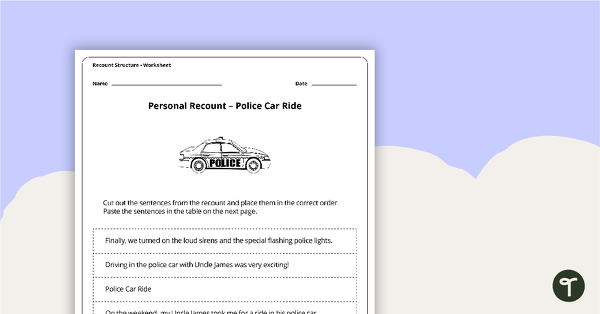
Personal Recount Sequencing Activity - Police Car Ride
A worksheet to use in the classroom when learning the sequence of a personal recount.
- Plus Plan
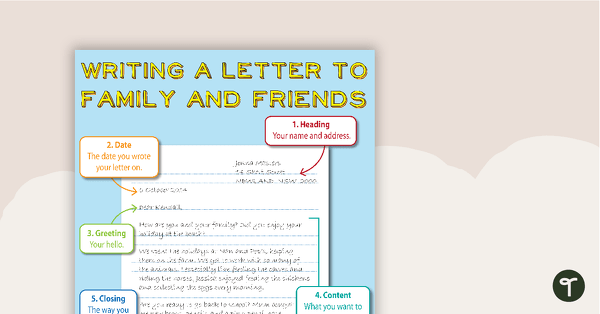
Parts of a Friendly Letter Anchor Chart
Use this parts of a friendly letter anchor chart to explain and simplify the letter-writing process for your lower primary students.